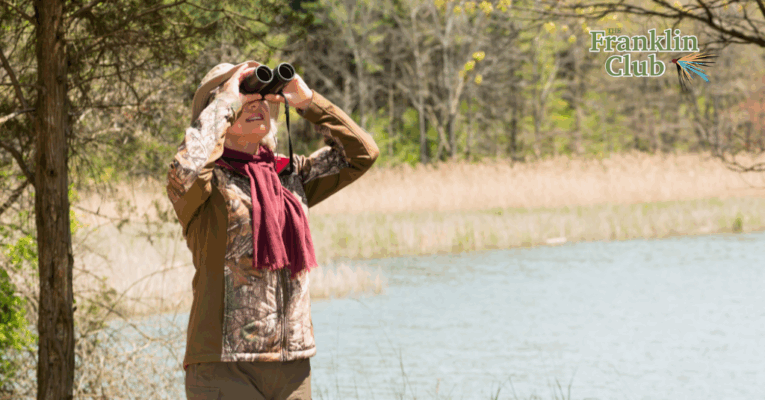Bird Species Commonly Spotted Around The Franklin Club in Ontario
The Franklin Club’s 200 scenic acres are home to a rich variety of birdlife. From raptors gliding overhead to colourful songbirds flitting through the trees, the Club’s mix of forest, field, and water provides prime habitat for birds all year long. The trails, shoreline, and treetops are always alive with movement and sound, making birdwatching a rewarding part of every visit.
Bird activity shifts with the seasons, offering something new to see whether it’s early spring migration or a quiet winter silhouette. Early mornings and calm evenings are often the best times to observe birds up close, as they forage, sing, or interact with their flocks. For many members, watching birds has become a peaceful part of their time outdoors and an opportunity to slow down and connect with their natural surroundings.
This guide features just some of the birds commonly seen around the Club, and we’re always looking to add more. We encourage members and their guests to share their sightings along with any photos by emailing our team the details of your sights to: info@thefranklinclub.ca
Great Blue Heron
Elegant and solitary, the Great Blue Heron is one of the most iconic birds you’ll see near the water. With their long legs and graceful necks, these patient hunters are often spotted wading slowly along the shoreline, scanning for fish and frogs. Did you know?
-
Despite their size, they nest high in trees, often in colonies called heronries.
-
Their wingspan can reach up to two metres—making them one of Ontario’s largest birds.
-
They strike with lightning speed when hunting, using their sharp beaks like spears.
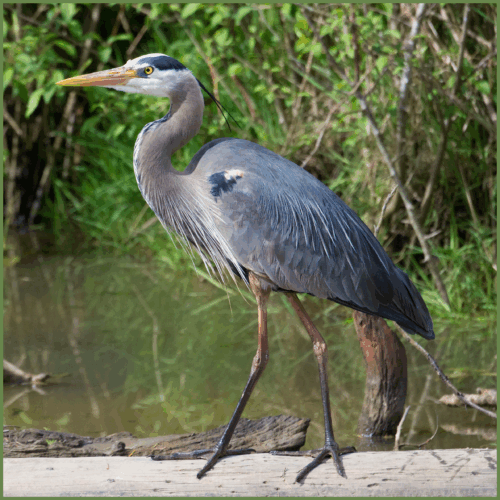
Common Loon
Famous for their haunting, echoing calls, loons are a classic symbol of Ontario’s wilderness. At The Franklin Club, you might hear one long before you see it. Loons are powerful swimmers and skilled divers—rarely seen flying unless they’re heading from one lake to another. Did you know?
-
Loons can dive up to 60 metres deep in search of fish.
-
Their eerie call is used to communicate across long distances and defend territory.
-
They require a long runway of water to take off due to their size and weight.
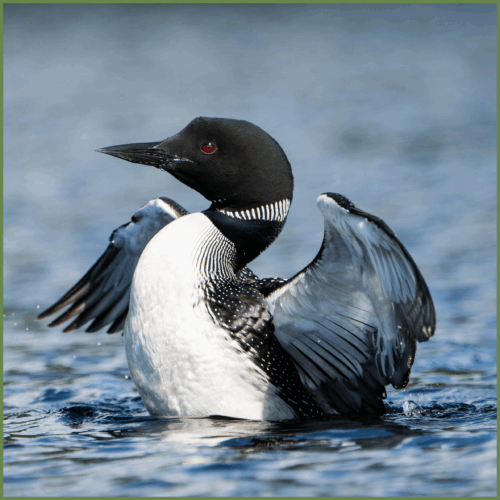
Canada Goose
The Canada Goose is a familiar face around Ontario’s lakes and fields. Often seen in pairs or large flocks, they’re most active during spring and fall migrations. However many geese stick around all year if conditions are right. Did you know?
-
They mate for life and often return to the same nesting spots each year.
-
Goslings can swim just 24 hours after hatching.
-
Their distinctive V-formation flight saves energy and improves coordination during long migrations.
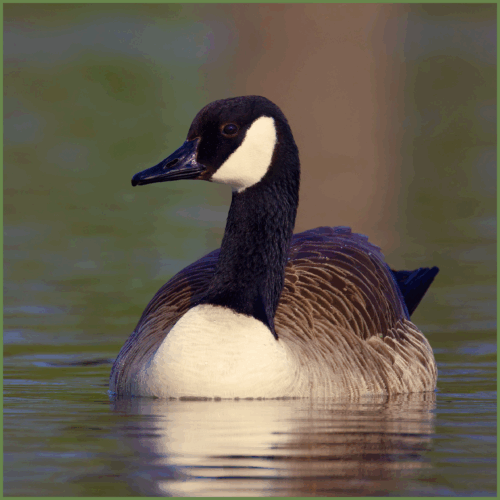
Red-tailed Hawk
Often seen soaring in wide circles over open fields, the Red-tailed Hawk is one of Ontario’s most common raptors. You might spot one perched on a branch or hear its raspy scream echoing overhead. Did you know?
-
Their reddish-brown tail gives them their name—but it doesn’t show until adulthood.
-
Red-tailed Hawks can see eight times more clearly than humans.
-
They often return to the same nesting area each season.
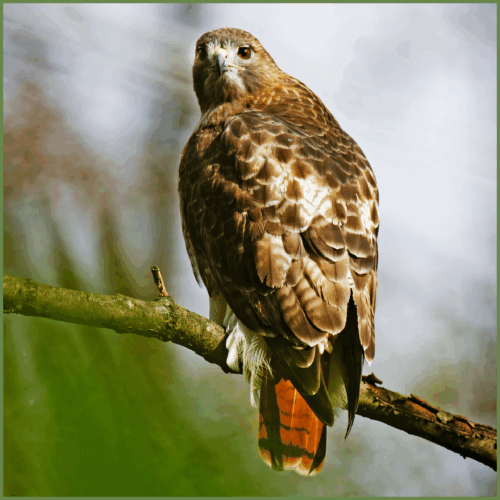
Bald Eagle
Once rare in Ontario, the Bald Eagle has made an impressive comeback. With their white heads, massive wingspans, and commanding presence, they’re a thrilling sight to witness flying over the lake or perched near shore. Did you know?
-
Bald Eagles build some of the largest nests of any bird—up to 2 metres wide.
-
They feed primarily on fish but will also scavenge.
-
Their calls are surprisingly weak and chirpy. Hollywood often dubs in a Red-tailed Hawk call instead!
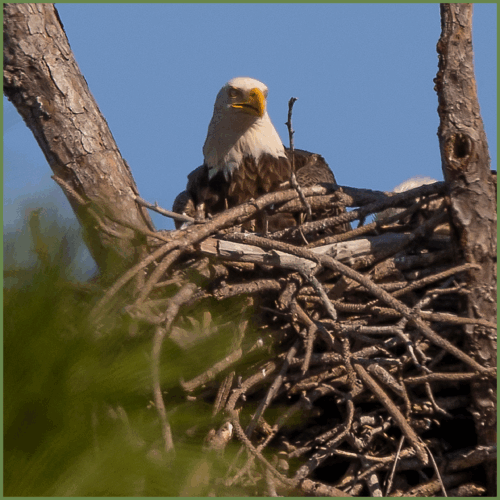
Osprey
Nicknamed the “fish hawk,” the Osprey is a skilled fisher that hunts by diving feet-first into the water. They often nest on tall structures like dead trees or utility poles, and their presence signals healthy waterways. Did you know?
-
Ospreys have reversible outer toes, helping them grip slippery fish.
-
They often hover briefly before diving a rare behaviour among raptors.
-
They return to Ontario each spring from wintering grounds in Central and South America.
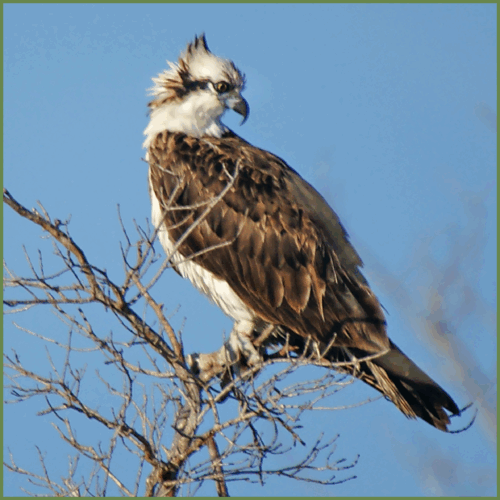
Turkey Vulture
Although their appearance may be a bit intimidating, Turkey Vultures play a vital role in nature. These large, dark birds soar with effortless grace, riding thermal air currents to search for carrion. Did you know?
-
They locate food almost entirely by smell which is rare among birds.
-
Their bald red heads help keep them clean when feeding.
-
When threatened, they may vomit as a defence mechanism.
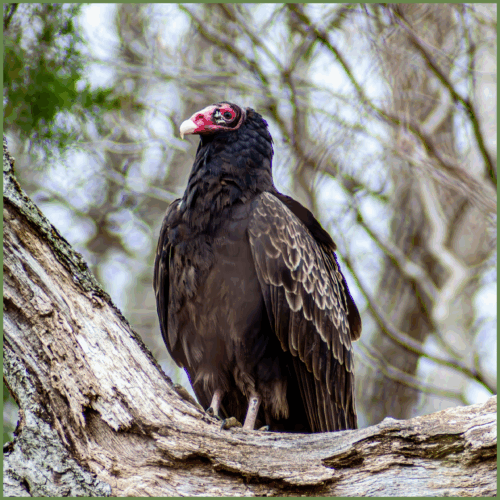
Eastern Bluebird
A true sign of spring, the Eastern Bluebird is known for its vivid colour and cheerful song. They love open fields and forest edges, perfectly suited to the mix of habitats at the Club. Did you know?
-
Bluebirds often use nesting boxes placed by humans to raise their young.
-
Males sing to attract mates and defend territory.
-
They’re insect-eaters and love mealworms, especially when feeding chicks.
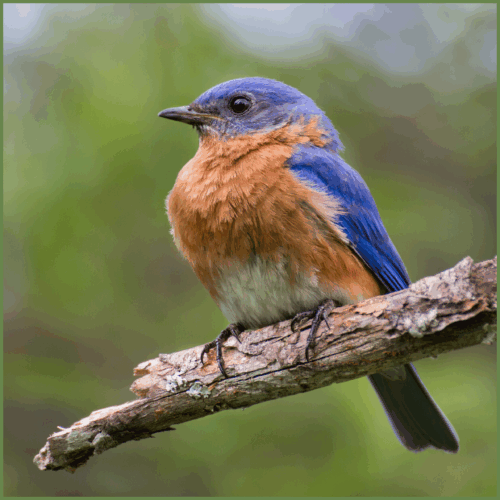
American Goldfinch
Bright yellow in summer, the American Goldfinch is like a flying wildflower. Their lilting calls and bouncy flight pattern make them easy to spot in open grassy areas. Did you know?
-
Goldfinches breed later than most birds, waiting for thistle to bloom.
-
Males shed their bright yellow feathers in fall, turning olive until spring.
-
They’re strict vegetarians, one of the few bird species that eat only seeds and plant matter.
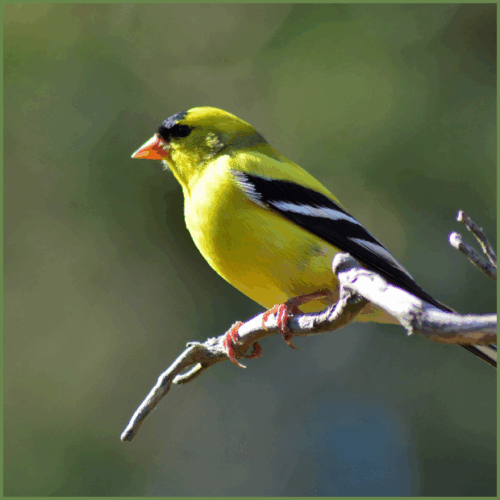
Red-winged Blackbird
Often heard before seen, these bold birds are vocal defenders of their territory. Males display red and yellow shoulder patches while calling loudly from cattails and tall grasses. Did you know?
-
Females look completely different being brown and streaky to blend into their nests.
-
They return early in spring, often before the snow is fully gone.
-
They aren’t shy about chasing away much larger birds and even people!
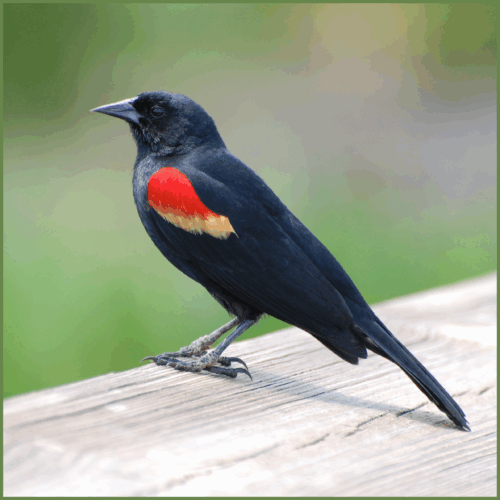
Chickadee (Black-capped)
Curious, charming, and downright friendly, the Black-capped Chickadee is a favourite among birdwatchers. These tiny birds are frequent visitors to feeders and often travel in mixed flocks with nuthatches and woodpeckers. Did you know?
-
Chickadees hide food in bark and remember the locations for weeks.
-
Their “chick-a-dee-dee-dee” call changes in length based on danger level.
-
They can lower their body temperature at night to conserve energy.
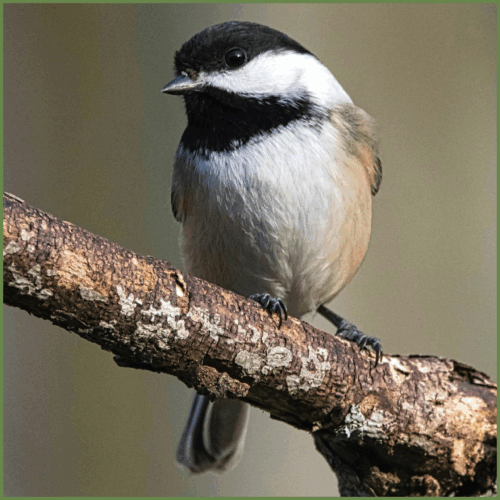
Cedar Waxwing
Sleek and social, Cedar Waxwings travel in flocks and love fruiting trees. Their smooth brown and grey plumage is accented by a black eye mask and waxy red wing tips. Did you know?
-
They can become “tipsy” from eating fermented berries.
-
They pass berries from bird to bird in a line before one eats it.
-
Their call is a soft, high-pitched trill.
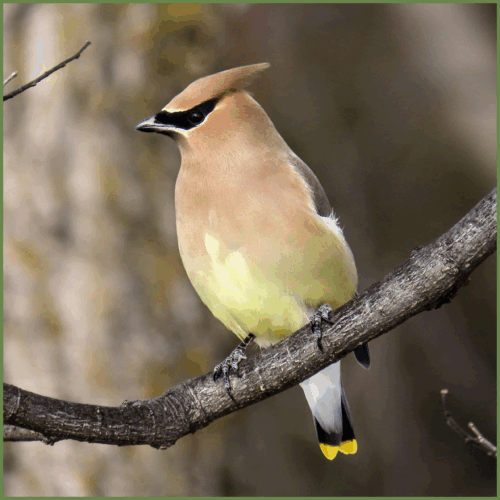
Northern Cardinal (Red Cardinal)
Bold and unmistakable, the bright red Northern Cardinal is a year-round resident. Males stand out with their brilliant colouring, while females wear more muted tones with similar features. Did you know?
-
Both males and females sing, often calling back and forth.
-
They’re highly territorial and may even attack their own reflection.
-
Cardinals are often the first to visit feeders in the morning and last to leave at night.
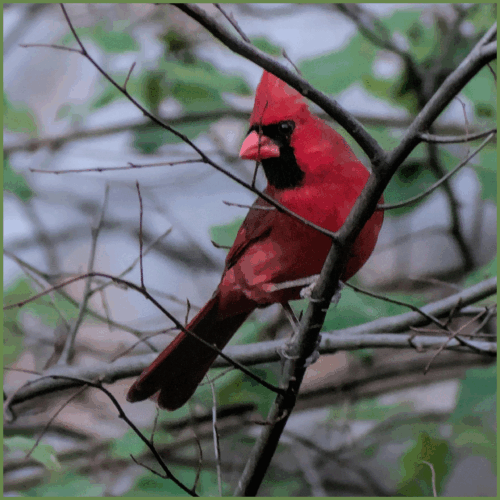
Robin (American Robin)
Ontario’s unofficial harbinger of spring, the robin is often seen pulling worms from the lawn or hopping through garden beds. Their cheerful song is a classic morning soundtrack. Did you know?
-
Robins can produce multiple broods each summer.
-
They have excellent eyesight and can spot worms moving underground.
-
While most migrate, some stay year-round near open water and food sources.
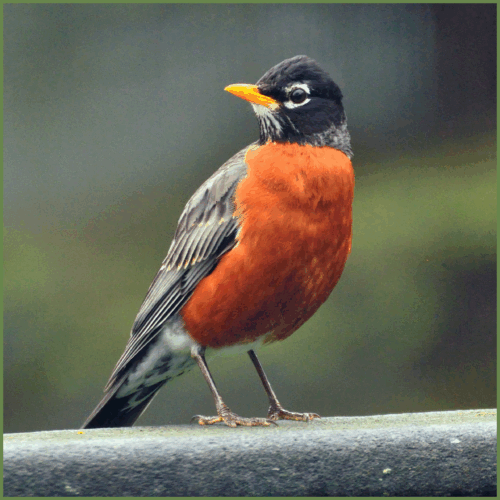
Tree Swallow
Fast, agile, and always in motion, Tree Swallows are a thrill to watch over open water. They nest in cavities and often return to the same nesting boxes each year. Did you know?
-
They feed almost entirely on flying insects which makes them a natural pest control against black flies, mosquitos, etc.
-
Their iridescent blue backs shimmer in the sunlight.
-
Both parents care for the young, and fledglings leave the nest within three weeks.

Belted Kingfisher
Loud, flashy, and fun to watch, the Belted Kingfisher is often seen perched above water or flying with a rattling call. They dive headfirst into the water to catch fish. Did you know?
-
Females are more colourful than males, which is a rare trait among birds.
-
They nest in long burrows they dig into sandy banks.
-
Kingfishers can hover briefly before diving for prey.
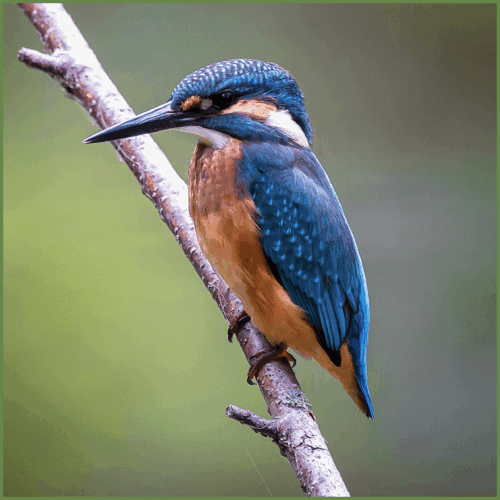
Doves (Mourning Dove)
Gentle and graceful, Mourning Doves are common in open areas and around feeders. Their soft cooing adds to the peaceful sounds of early morning or dusk. Did you know?
-
They can drink without tilting their heads which is a rare skill in birds.
-
Their mournful call is often mistaken for an owl.
-
They’re among the most widespread birds in North America.
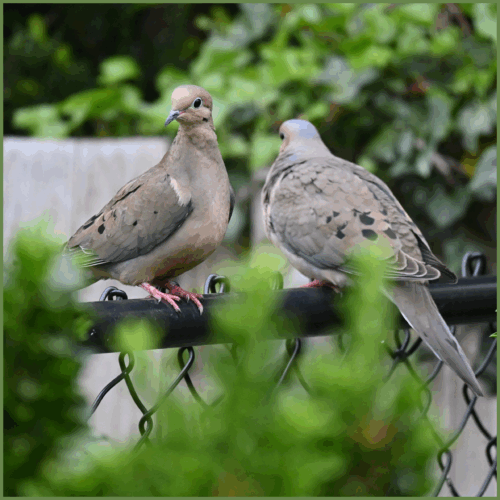
Grouse
Often heard before they’re seen, grouse can startle you with a sudden burst of wingbeats. They prefer dense underbrush and forest edges, where they forage for berries and insects. Did you know?
-
Males perform a “drumming” display by beating their wings to attract mates.
-
Their feathered legs help insulate them in winter.
-
They’re masters of camouflage and will freeze when threatened.
.
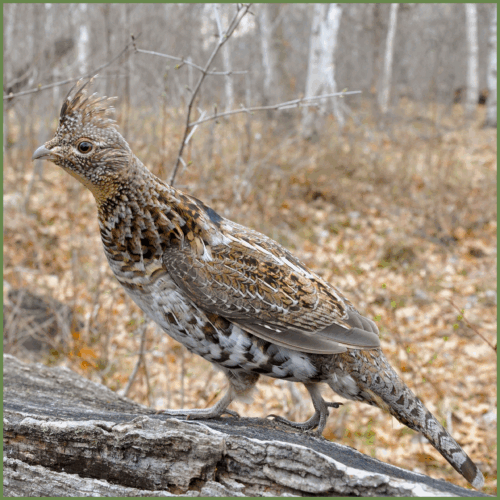
Wild Turkey
Large, social, and surprisingly agile, Wild Turkeys often travel in flocks across forest clearings and trails. They’re more common than many people realize and can even be spotted roosting in trees. Did you know?
-
They can fly short distances and up to 90 km/h in bursts.
-
Their gobble can be heard up to a kilometre away.
-
Turkeys have excellent eyesight and a wide field of vision.

Mallard Duck
Familiar, friendly, and often found paddling along the shoreline, Mallards are one of Ontario’s most common and recognizable ducks. The iridescent green heads of the males and the mottled brown colouring of the females make them easy to identify on the water or waddling across the grass. Did you know?
-
Mallards are dabbling ducks, meaning they feed by tipping forward in the water rather than diving.
-
They’re extremely adaptable and can live in urban, rural, and wild wetland settings.
-
Male Mallards lose their bright colouring after breeding season in a process called eclipse plumage.
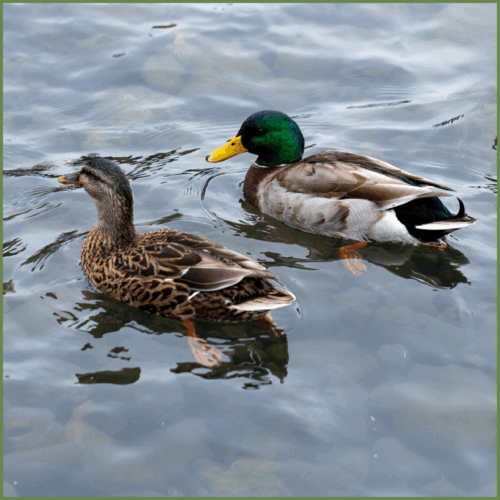
White Swan (Mute Swan)
Elegant and serene, Mute Swans are often seen gliding across calm water with their necks curved in a graceful S-shape. Despite their beauty, they’re not native to Ontario! They were introduced and have since become a familiar sight on many lakes and ponds. Did you know?
-
Mute Swans aren’t actually mute, they make soft grunts, snorts, and hisses.
-
They’re fiercely territorial, especially during nesting season.
-
With wingspans reaching over 2 metres, they’re one of the largest flying birds in Canada.
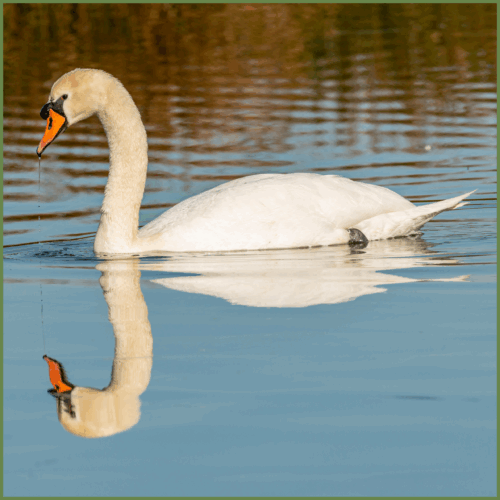
Barred Owl
Often heard calling “Who cooks for you? Who cooks for you all?” in the early morning or evening, the Barred Owl prefers mature forests near water. They’re one of the more commonly heard owls around wooded Ontario areas. Did you know?
-
Barred Owls don’t migrate, they stay in their territory year-round.
-
Their eyes are entirely dark brown, unlike most owls which have yellow irises.
-
They’re known for being curious and may approach quietly if you imitate their call.
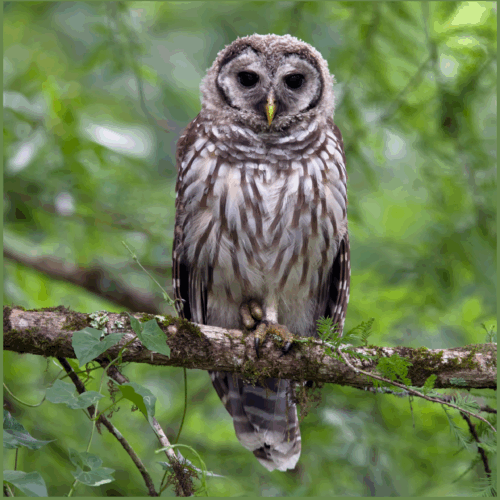
Great Horned Owl
With their large size, tufted “horns,” and piercing yellow eyes, Great Horned Owls are the most powerful of Ontario’s owls. They inhabit a wide range of environments, from dense woods to open fields. Did you know?
-
They’re one of the few animals that regularly hunt skunks and that they have a poor sense of smell.
-
Their strong talons can exert up to 500 pounds of pressure.
-
Young owls start calling to each other from their nests before they can fly.
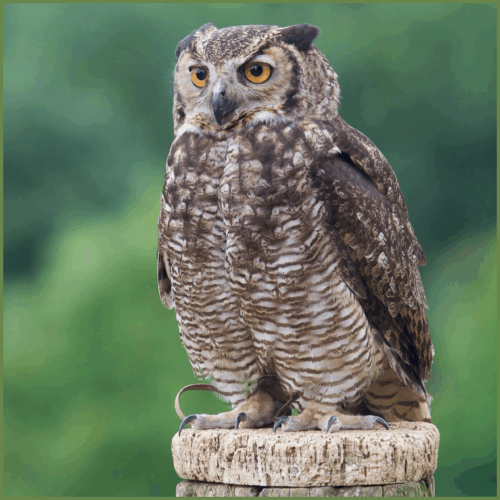
Great Grey Owl
Elusive and majestic, the Great Grey Owl is the tallest owl species in North America. Though less common, they are sometimes seen in northern and central Ontario, especially in winter when they move south. Did you know?
-
Despite their large appearance, they are mostly feathers and weigh surprisingly little.
-
They can hear rodents moving beneath snow and plunge through to catch them.
-
Their facial disk helps funnel sound directly to their ears.
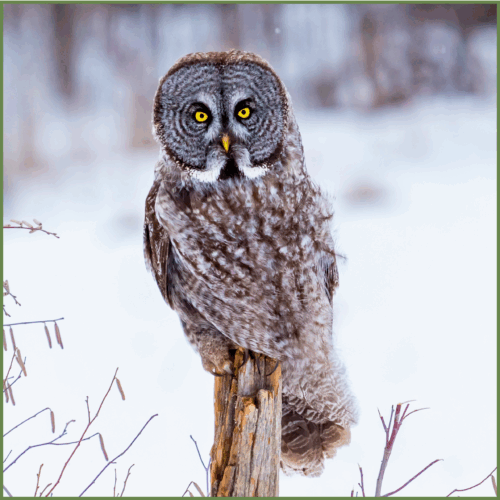
Eastern Screech Owl
Small but full of character, the Eastern Screech Owl is a master of camouflage. These tiny owls blend perfectly with tree bark and are often overlooked until you hear their eerie trilling call echo through the woods at night. Did you know?
-
They come in two colour morphs: grey and reddish-brown. Both allowing them to naturally blend into tree cavities.
-
Despite their name, their call is more of a haunting whinny than a screech.
-
They often nest in old woodpecker holes or nest boxes and are year-round residents in southern Ontario.
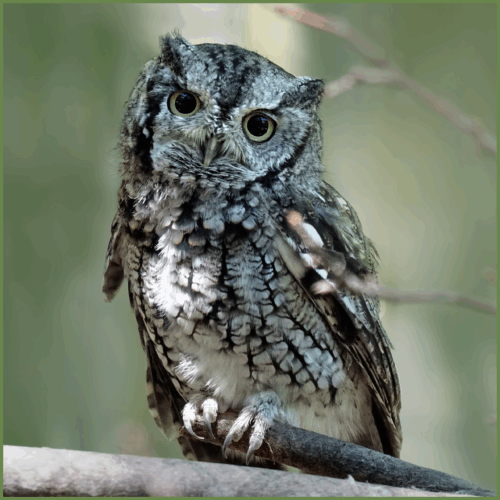
Killdeer
Killdeer are bold, ground-nesting shorebirds often found in open grassy areas, near water, or even along gravel roads. They’re named for their loud, piercing “kill-deer” call, which you’re likely to hear before spotting one. Did you know?
-
Killdeer are famous for their “broken wing” act which is them faking injury to lure predators away from their nests.
-
Their eggs blend perfectly into gravel or sandy ground, making nests tricky to see.
-
They’re active during the day and night, especially under bright moonlight.
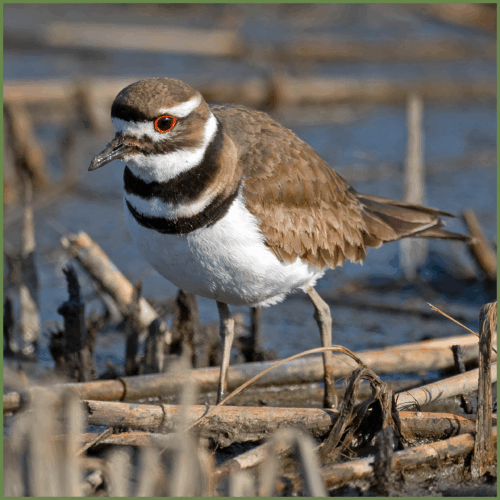
Final Thoughts: The longer you look, the more nature shows you.
Birds fill the skies, branches, and shorelines across the Club grounds. Spotting an owl in the tree-line or a goldfinch in flight adds something special to the day. With binoculars in hand and a bit of quiet attention, it’s easy to discover the remarkable wildlife that shares this space. Each visit brings different sounds, sightings, and small surprises, from a robin gathering nesting material to the sudden glide of a hunting hawk. For those who take the time to listen and look, birdwatching becomes part of the rhythm of the Club. Sharing sightings with fellow members or family becomes a quiet tradition, adding another layer to your time outside. Whether you’re walking the trail or pausing by the lake, the birds are always nearby, offering a reminder of how alive the landscape really is.

